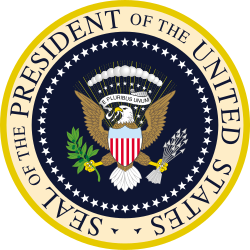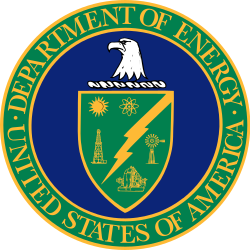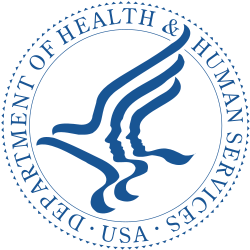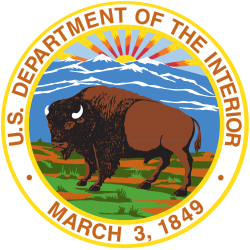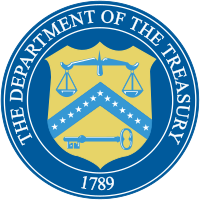List of federal agencies in the United States Last updated November 26, 2025
Legislative definitions of an agency of the federal government of the United States are varied, and even contradictory. The official United States Government Manual offers no definition. While the Administrative Procedure Act definition of "agency" applies to most executive branch agencies, Congress may define an agency however it chooses in enabling legislation, and through subsequent litigation often involving the Freedom of Information Act and the Government in the Sunshine Act . These further cloud attempts to enumerate a list of agencies.
United States Congress Federal judiciary of the United States Executive Office of the President United States Department of Agriculture (USDA) Office of the Secretary of Agriculture Mission Areas United States Department of Commerce Office of the Secretary (OS) Bureaus United States Department of Defense (DoD) Universities and research institutes Combatant commands Joint agencies Department of the Army Department of the Navy Department of the Air Force United States Department of Education Office of the Secretary of Education (OSE) Office of Deputy Secretary of Education (ODSE) Institute of Education Sciences (IES) Office of the Under Secretary (OUS) White House initiatives and operating commissions Advisory bodies Federally-aided corporations United States Department of Energy United States Department of Health and Human Services United States Department of Homeland Security Headquarters Offices and Directorates Component Agencies United States Department of Housing and Urban Development Executive Offices Administrative Offices Agencies United States Department of the Interior (DOI) United States Department of Justice (DOJ) United States Department of Labor (DOL) Office of the Secretary (OSEC) United States Department of State (DOS) Office of the Secretary Reporting to the Deputy Secretary for Management and Resources Reporting to the Under Secretary for Arms Control and International Security Reporting to the Under Secretary for Human Rights, Civilian Security, and Democracy Reporting to the Under Secretary for Environment, Energy, and Economic Growth Reporting to the Under Secretary for Management Reporting to the Under Secretary for Political Affairs Reporting to the Under Secretary for Public Diplomacy and Public Affairs Permanent diplomatic missions United States Department of Transportation Operating administrations United States Department of the Treasury Departmental offices Bureaus 3 United States Department of Veterans Affairs Office of the Secretary of Veterans Affairs Agencies 2 Independent agencies, tribunals, and government-owned corporations Administration, records, and federal property Civil rights Civil service Commerce Defense and security Elections Education and broadcasting Energy, science, and technology Foreign relations Interior Labor Monetary and financial Postal Retirement and healthcare Seat of government Transportation Volunteerism Joint programs and interagency agencies Special Inspector General Office Quasi-official organizations Arts & culture Memorial Commerce and technology Defense and diplomacy Human service and community development Interior 2 Law and justice See also References Explanatory notes Citations Bibliography External links The executive branch of the federal government includes the Executive Office of the President and the United States federal executive departments (whose secretaries belong to the Cabinet ). Employees of the majority of these agencies are considered civil servants .
The majority of the independent agencies of the United States government are also classified as executive agencies (they are independent in that they are not subordinated under a Cabinet position). There are a small number of independent agencies that are not considered part of the executive branch, such as the Congressional Research Service and the United States Sentencing Commission , which are legislative and judicial agencies, respectively.
United States Congress The U.S. Congress is the bicameral legislature of the United States government, and is made up of two chambers: the United States Senate (the upper chamber) and the United States House of Representatives (the lower chamber). Together, the two chambers exercise authority over the following legislative agencies:
Library of Congress (LOC), a national library dedicated to national records, which administers various programs, agencies, and services including:
Executive Office of the President The President of the United States is the chief executive of the federal government. He is in charge of executing federal laws and approving, or vetoing, new legislation passed by Congress. The President resides in the Executive Residence (EXR) maintained by the Office of Administration (OA).
To effectively run the country's affairs, the President also maintains councils regarding various issues, including:
[ 6]
Office of the Secretary of Agriculture Office of Secretary of Agriculture Office of Deputy Secretary of Agriculture Office of the Assistant Secretary for Administration Office of the Assistant Secretary for Civil Rights Office of the Assistant Secretary for Congressional Relations Center for Faith-Based and Neighborhood Partnerships (CFBNP) Office of the General Counsel (OGC) Office of Information Affairs Office of Inspector General (OIG) Office of Budget and Program Analysis (OBPA) Office of Communications (OC) Office of Ethics (OE) Office of Hearings and Appeals (OHA) Office of Partnerships and Public Engagement (OPPE) Office of the Chief Economist (OCE) Office of the Chief Financial Officer (OFCO) Office of the Chief Information Officer (OCIO) Office of the Executive Secretariat (OES) Office of Tribal Relations (OTR) White House Liaison Office (WHLO) Departmental Administration (DA) Office of Customer Experience Office of Contracting and Procurement (OCP) Office of Homeland Security (OHS) Office of Human Resources Management (OHRM) Office of Operations (OO) Office of Property and Environmental Management (OPEM) Agriculture Buildings and Facilities (AgBF) Hazardous Materials Management (HMM) Office of Safety, Security and Protection (OSSP) Office of Small and Disadvantaged Business Utilization (OSDBU) Mission Areas United States Department of Commerce Universities and research institutes Department of the Air Force U.S. Air Force U.S. Air Force Major Commands Reserve and Auxiliary Components U.S. Space Force U.S. Space Force Major Commands United States Department of Education Office of Communications and Outreach Office of Finance and Operations Office of Inspector General Office of the General Counsel Office of Legislation and Congressional Affairs Office for Civil Rights Office of Educational Technology Office of the Chief Information Officer Office of Planning, Evaluation and Policy Development Budget Service Risk Management Service National Center for Education Evaluation and Regional Assistance National Center for Education Research National Center for Education Statistics National Center for Special Education Research National Board for Education Sciences White House initiatives and operating commissions Federally-aided corporations United States Department of Energy Leadership offices Program offices [ 12] Staff offices Office of Congressional and Intergovernmental Affairs Office of Economic Impact and Diversity Office of Enterprise Assessments Office of Environment, Health, Safety, and Security Office of Hearings and Appeals Office of Inspector General Office of Intelligence and Counterintelligence Office of International Affairs Office of Management Office of Policy Office of Project Management Office of Public Affairs Office of Small and Disadvantaged Business Utilization Office of Technology Transitions Office of the Chief Financial Officer Office of the Chief Human Capital Officer Office of the Chief Information Officer Office of the General Counsel Power administrations and other agencies National Laboratories & Technology Centers Field sites United States Department of Health and Human Services United States Department of Homeland Security Office of the Secretary Office of the Secretary Immediate Office of the Secretary Office of the Deputy Secretary Office of the Chief of Staff Military Advisor's Office Office of the Executive Secretary Joint Requirements Council Office of Strategy, Policy, and Plans Office of General Counsel Office of Legislative Affairs Office of Public Affairs Office of Partnership and Engagement Office for Civil Rights and Civil Liberties Office of the Citizenship and Immigration Services Ombudsman Office of the Immigration Detention Ombudsman Privacy Office Headquarters Offices and Directorates United States Department of Housing and Urban Development Executive Offices Office of the Secretary Office of the Deputy Secretary Office of Hearings and Appeals Office of Small and Disadvantaged Business Utilization Office of Faith-Based and Neighborhood Partnerships Office of Congressional and Intergovernmental Relations Office of Public Affairs Administrative Offices Office of Departmental Equal Employment Opportunity Office of General Counsel Departmental Enforcement Center Office of the Assistant Secretary for Administration Chief Administrative Office Office of the Chief Human Capital Officer Office of the Chief Procurement Officer Office of the Chief Financial Officer Office of the Chief Information Officer Office of Inspector General Office of the Secretary Office of Congressional and Legislative Affairs Office of the Executive Secretariat and Regulatory Affairs Office of Intergovernmental and External Affairs Secretary's Indian Water Rights Office Indian Arts and Crafts Board Strategic Sciences Group Interior Museum Land Buy-Back Program for Tribal Nations Office of the Assistant Secretary for Indian Affairs Office of the Assistant Secretary for Fish and Wildlife and Parks Office of the Assistant Secretary for Land and Minerals Management Office of the Assistant Secretary for Water and Science Office of the Assistant Secretary for Policy, Management and Budget Office of Environmental Policy and Compliance Office of Restoration and Damage Assessment Office of Native Hawaiian Relations Office of Policy Analysis Office of Planning and Performance Management Orphaned Wells Program Office National Invasive Species Council Office of Budget Office of Grants Management Office of Acquisition and Property Management Office of Financial Management Office of Small and Disadvantaged Business Utilization Business Integration Office Office of Human Capital Office of Occupational Safety and Health Office of Employee Development Office of Hearings and Appeals Office of Collaborative Action and Dispute Resolution Appraisal and Valuation Services Office Office of Facilities and Administrative Services Interior Business Center Office of Law Enforcement and Security Office of Wildland Fire Office of Aviation Services Office of Emergency Management Interagency Borderland Coordination and Field Communications Program Office of Natural Resources Revenue Office of Diversity, Inclusion and Civil Rights Office of the Chief Information Officer Office of Inspector General Office of the Solicitor Office of the Assistant Secretary for Insular and International Affairs Central Utah Project Completion Act Office Bureau of Indian Affairs Bureau of Indian Education Bureau of Land Management Bureau of Ocean Energy Management Bureau of Reclamation Bureau of Safety and Environmental Enforcement Bureau of Trust Funds Administration Office of Surface Mining Reclamation and Enforcement National Indian Gaming Commission National Park Service United States Fish and Wildlife Service United States Geological Survey Executive Secretary Centers for Faith and Opportunity Initiative Office of the Ombudsman for the Energy Employees Occupational Illness Programs Office of Public Liaison Offices under the Deputy Secretary of Labor Office of the Assistant Secretary for Administration and Management Office of the Assistant Secretary for Policy Office of the Chief Financial Officer Office of the Chief Information Officer Office of Congressional and Intergovernmental Affairs Office of Emergency Management Office of Federal Contract Compliance Programs Office of Labor-Management Standards Office of Public Affairs Office of Disability Employment Policy Office of the Solicitor Office of Worker's Compensation Program Boards under the Office of Administrative Law Judges Reporting to the Deputy Secretary for Management and Resources Office of Foreign Assistance Reporting to the Under Secretary for Arms Control and International Security Reporting to the Under Secretary for Management Reporting to the Under Secretary for Political Affairs Reporting to the Under Secretary for Public Diplomacy and Public Affairs Permanent diplomatic missions United States Department of Transportation Operating administrations United States Department of the Treasury Departmental offices Source: [ 15]
United States Department of Veterans Affairs Office of the Secretary of Veterans Affairs Education and broadcasting Retirement and healthcare Joint programs and interagency agencies Special Inspector General Office Quasi-official organizations Human service and community development References Explanatory notes ↑ shares staff with the National Security Council Citations ↑ 28 U.S.C. § 151 ↑ "USDA Organization Chart" (PDF) . U.S. Department of Agriculture. September 24, 2024. Archived from the original (.pdf) on April 12, 2025. Retrieved May 28, 2025 . ↑ "Bureaus and Offices" . United States Department of Commerce. Archived from the original on June 5, 2025. Retrieved June 4, 2025 . ↑ "Organizational Offices" . United States Patent and Trademark Office. Archived from the original on June 5, 2025. Retrieved June 4, 2025 . ↑ "U.S. Department of Commerce International Trade Administration Work Reference Chart" (PDF) . ITA Organization Charts . United States International Trade Administration. May 9, 2025. Archived from the original on June 5, 2025. Retrieved June 5, 2025 . ↑ "NOAA Organization Chart" . National Ocean and Atmospheric Administration. May 13, 2025. Archived from the original on June 6, 2025. Retrieved June 5, 2025 . ↑ "NIST Organization Structure" . Office of the Director . National Institute of Standards and Technology. June 2, 2025. Archived from the original on June 6, 2025. Retrieved June 5, 2025 . ↑ "Program Offices" . Department of Energy . Retrieved June 7, 2019 . 1 2 3 4 5 "Our Administrations" . US Department of Transportation . March 1, 2012. Retrieved December 17, 2017 . ↑ "Governance and Oversight" . U.S. Merchant Marine Academy . January 27, 2013. Retrieved December 17, 2017 . ↑ "IBM Cognos software" . www.fedscope.opm.gov . Retrieved December 17, 2017 . 1 2 3 4 5 6 7 8 9 10 "Bureaus" . www.treasury.gov . Retrieved December 17, 2017 . Bibliography Federal Register (November 2013). The United States Government Manual (PDF) . Washington, DC: Government Printing Office. Fischer, Molly (March 28, 2011). "What is a Federal Agency?" (PDF) . Federal Agency Directory . Louisiana State University Libraries. Archived from the original (PDF) on May 18, 2013. Retrieved September 21, 2014 . Kamensky, John (Spring 2013). "Mapping the Contours of the Federal Government" (PDF) . Administrative and Regulatory Law News . 38 (3). American Bar Association : 3– 4. Retrieved September 22, 2014 . Lewis, David E.; Selin, Jennifer L. (2013). Sourcebook of United States Executive Agencies (PDF) (corrected March 2013 ed.). Washington, DC: Administrative Conference of the United States . This page is based on this
Wikipedia article Text is available under the
CC BY-SA 4.0 license; additional terms may apply.
Images, videos and audio are available under their respective licenses.



